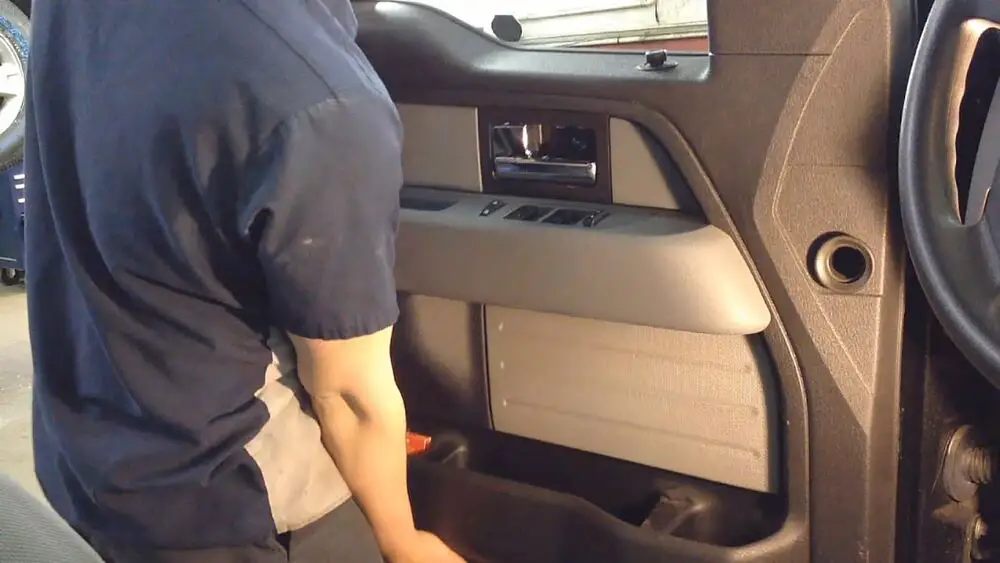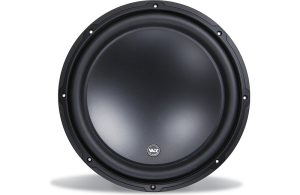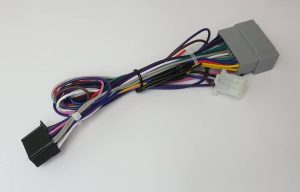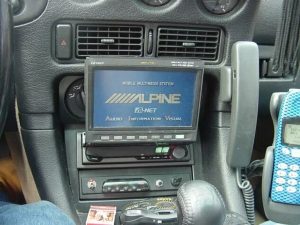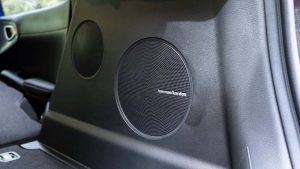The 2013 Ford F150 remains a favorite among truck enthusiasts for its rugged performance and versatility. However, its factory audio system often leaves drivers wanting more. Upgrading the door speakers transforms the in-cabin experience, delivering crisp, powerful sound for every ride. This guide dives into the speaker sizes for the 2013 Ford F150, offers step-by-step installation tips, and shares expert advice to help you choose the best speakers for your truck. Whether you’re a music lover or simply crave better sound quality, this article equips you with everything you need to enhance your F150’s audio system.
Contents
- Why Upgrade Your 2013 Ford F150 Door Speakers?
- Speaker Sizes for the 2013 Ford F150
- Choosing the Best Aftermarket Speakers for Your F150
- Tools and Materials for Speaker Installation
- Step-by-Step Guide to Installing Door Speakers in a 2013 Ford F150
- Enhancing Your Audio System Further
- Common Mistakes to Avoid
- Maintaining Your New Speakers
- FAQs About 2013 Ford F150 Speaker Upgrades
- Conclusion
Why Upgrade Your 2013 Ford F150 Door Speakers?
Factory-installed speakers in the 2013 Ford F150 prioritize cost over quality. Over time, these speakers wear out, producing distorted or weak sound. Upgrading to aftermarket speakers boosts audio clarity, bass response, and overall volume. A better sound system elevates road trips, daily commutes, and off-road adventures. Plus, modern speakers handle a variety of music genres, from country to rock, with precision.
Choosing the right speakers starts with knowing the correct sizes for your truck. Installing the wrong size leads to poor fitment, rattling, or even damage to the door panels. Let’s explore the speaker sizes for the 2013 Ford F150 and how to select the best replacements.
Speaker Sizes for the 2013 Ford F150
The 2013 Ford F150 comes in multiple trims, such as XL, XLT, Lariat, and King Ranch, each with slightly different audio configurations. However, the door speaker sizes remain consistent across most models. Here’s a breakdown of the speaker sizes:
- Front Door Speakers: 6×8 inches (also compatible with 5×7-inch speakers)
- Rear Door Speakers: 6×8 inches (also compatible with 5×7-inch speakers)
Some models, like those with the Sony premium audio system, may include additional tweeters or a subwoofer. For this guide, we focus on the primary door speakers, as they’re the most commonly upgraded components.
Why 6×8 and 5×7 Speakers Are Interchangeable
The 6×8-inch and 5×7-inch speakers share similar mounting patterns, making them interchangeable in the 2013 Ford F150. This flexibility gives you more options when shopping for replacements. However, always check the mounting depth and screw hole alignment to ensure a snug fit. A proper fit prevents vibrations and maintains the door panel’s integrity.
Choosing the Best Aftermarket Speakers for Your F150
Selecting the right speakers involves more than just matching sizes. Consider sound quality, power handling, and compatibility with your truck’s audio system. Here are key factors to guide your decision:
1. Sound Quality
Look for speakers with a wide frequency range to capture highs, mids, and lows. Component speakers, which separate the tweeter and woofer, deliver superior clarity but require more complex installation. Coaxial speakers, combining all elements in one unit, offer a simpler upgrade with solid performance.
2. Power Handling
Check the RMS (Root Mean Square) power rating, which indicates how much power a speaker can handle continuously. Match the RMS rating to your head unit or amplifier to avoid distortion or damage. For the 2013 Ford F150, speakers with 50-100 watts RMS work well for most setups.
3. Sensitivity
Sensitivity measures how efficiently a speaker converts power into sound. Higher sensitivity (above 90 dB) means louder output with less power, ideal for factory head units. If you’re adding an amplifier, lower sensitivity speakers still perform well.
4. Build Quality
Durable materials, like polypropylene cones and rubber surrounds, resist wear from temperature changes and vibrations. These materials ensure your speakers last through years of heavy use.
5. Brand Reputation
Trusted brands like Kicker, Pioneer, JL Audio, and Rockford Fosgate offer reliable options for the 2013 Ford F150. Read reviews and compare specs to find speakers that suit your budget and audio preferences.
Top Speaker Recommendations
- Kicker DS Series 6×8-Inch Coaxial Speakers: Known for punchy bass and clear highs, these speakers fit perfectly in F150 doors and handle 70 watts RMS.
- Pioneer A-Series 6×8-Inch Speakers: Affordable yet powerful, these deliver balanced sound with 80 watts RMS.
- JL Audio C2-570x 5×7/6×8-Inch Speakers: Premium option with crisp vocals and deep bass, rated at 60 watts RMS.
Tools and Materials for Speaker Installation
Before installing new speakers, gather the necessary tools to make the process smooth and efficient. Here’s what you’ll need:
- Phillips and flathead screwdrivers
- Panel removal tool (to avoid damaging door panels)
- Torx T20 or T25 driver (for some F150 models)
- Wire cutters and crimpers
- Speaker adapter brackets (if needed)
- Wiring harness adapters (to avoid cutting factory wires)
- Foam gaskets or weatherstripping (to reduce vibrations)
- Socket wrench set
Having these tools on hand saves time and prevents frustration during installation.
Step-by-Step Guide to Installing Door Speakers in a 2013 Ford F150
Installing new speakers in your 2013 Ford F150 takes about 1-2 hours per door, depending on your experience. Follow these steps for a professional-quality upgrade:
Step 1: Prepare Your Workspace
Park your truck in a shaded, flat area. Disconnect the negative battery terminal to prevent electrical issues. Lay out your tools and speakers for easy access.
Step 2: Remove the Door Panel
Start with the front or rear door. Use a panel removal tool to pry off the trim pieces around the door handle and armrest. Remove any screws hidden beneath these covers, typically using a Phillips screwdriver or Torx driver. Gently pry the door panel away from the frame, working around the edges to release the plastic clips. Lift the panel upward to detach it from the window channel. Disconnect any electrical connectors for power windows or locks.
Step 3: Remove the Factory Speaker
Locate the factory speaker, usually mounted with screws or rivets. Remove the screws or drill out the rivets carefully. Unplug the wiring harness from the speaker. If the connector doesn’t match your new speaker, use a wiring harness adapter for a plug-and-play connection.
Step 4: Install the New Speaker
Test-fit the new speaker in the mounting location. If the speaker doesn’t align perfectly, use an adapter bracket. Secure the speaker with screws, ensuring a tight fit to prevent rattling. Attach the wiring harness, double-checking the positive and negative terminals. Add foam gaskets around the speaker to seal gaps and reduce vibrations.
Step 5: Reassemble the Door
Reconnect any electrical connectors and reattach the door panel. Align the plastic clips and press the panel firmly into place. Replace all screws and trim pieces. Repeat the process for the remaining doors.
Step 6: Test the Audio
Reconnect the battery and turn on your truck’s audio system. Play music to test the new speakers. Adjust the balance and fade settings to ensure all speakers work correctly. Listen for any rattling or distortion, which may indicate loose screws or improper sealing.
Enhancing Your Audio System Further
Upgrading door speakers lays the foundation for a stellar audio system, but you can take it further. Consider these additions to maximize sound quality:
Add an Amplifier
An external amplifier boosts power to your speakers, improving volume and clarity. Choose a compact amp that fits under a seat or in the trunk. Match the amp’s power output to your speakers’ RMS rating.
Install a Subwoofer
A subwoofer enhances bass, filling out the low-end frequencies that door speakers struggle to produce. For the 2013 Ford F150, a 10- or 12-inch subwoofer in a custom enclosure fits well behind the rear seat.
Upgrade the Head Unit
The factory head unit in the 2013 Ford F150 may limit audio quality. A modern aftermarket head unit adds features like Bluetooth, Apple CarPlay, and better sound processing. Ensure the new unit fits the dashboard and supports your speakers’ power needs.
Sound Deadening
Apply sound-deadening mats to the door panels to reduce road noise and vibrations. Brands like Dynamat or Noico improve audio clarity by creating a quieter cabin environment.
Common Mistakes to Avoid
Upgrading speakers seems straightforward, but small errors can derail your project. Steer clear of these pitfalls:
- Buying the Wrong Size: Double-check speaker sizes and mounting depth before purchasing.
- Skipping Wiring Adapters: Cutting factory wires complicates future upgrades. Use adapters for a clean install.
- Ignoring Sound Deadening: Without proper sealing, speakers may rattle or sound hollow.
- Overpowering Speakers: Pairing speakers with an overly powerful amp risks damage. Match RMS ratings carefully.
Maintaining Your New Speakers
To keep your speakers performing at their best, follow these maintenance tips:
- Clean the speaker grilles regularly to prevent dust buildup.
- Avoid playing music at maximum volume for extended periods, as it strains the speakers.
- Check for loose screws or rattling every few months, especially after off-road trips.
- Protect speakers from moisture by ensuring door seals are intact.
FAQs About 2013 Ford F150 Speaker Upgrades
What size are the door speakers in a 2013 Ford F150?
The front and rear door speakers are 6×8 inches, though 5×7-inch speakers also fit with the same mounting pattern.
Do I need an amplifier for new speakers?
An amplifier isn’t mandatory but significantly improves sound quality and volume. It’s especially useful for high-performance speakers.
Can I install speakers myself?
Yes, with basic tools and patience, most owners can install speakers in a few hours. Follow a guide like this one to avoid mistakes.
Will new speakers work with the factory head unit?
Most aftermarket speakers work with the factory head unit, especially those with high sensitivity. For best results, consider upgrading the head unit later.
Conclusion
Upgrading the door speakers in your 2013 Ford F150 unlocks a richer, more immersive audio experience. By choosing the right 6×8-inch or 5×7-inch speakers, gathering the proper tools, and following a clear installation process, you’ll enjoy crystal-clear sound on every drive. Pair your new speakers with an amplifier, subwoofer, or sound-deadening materials to take your audio system to the next level. With this guide, you’re ready to transform your truck into a rolling concert hall. Start shopping for speakers today and hit the road with your favorite tunes sounding better than ever.
